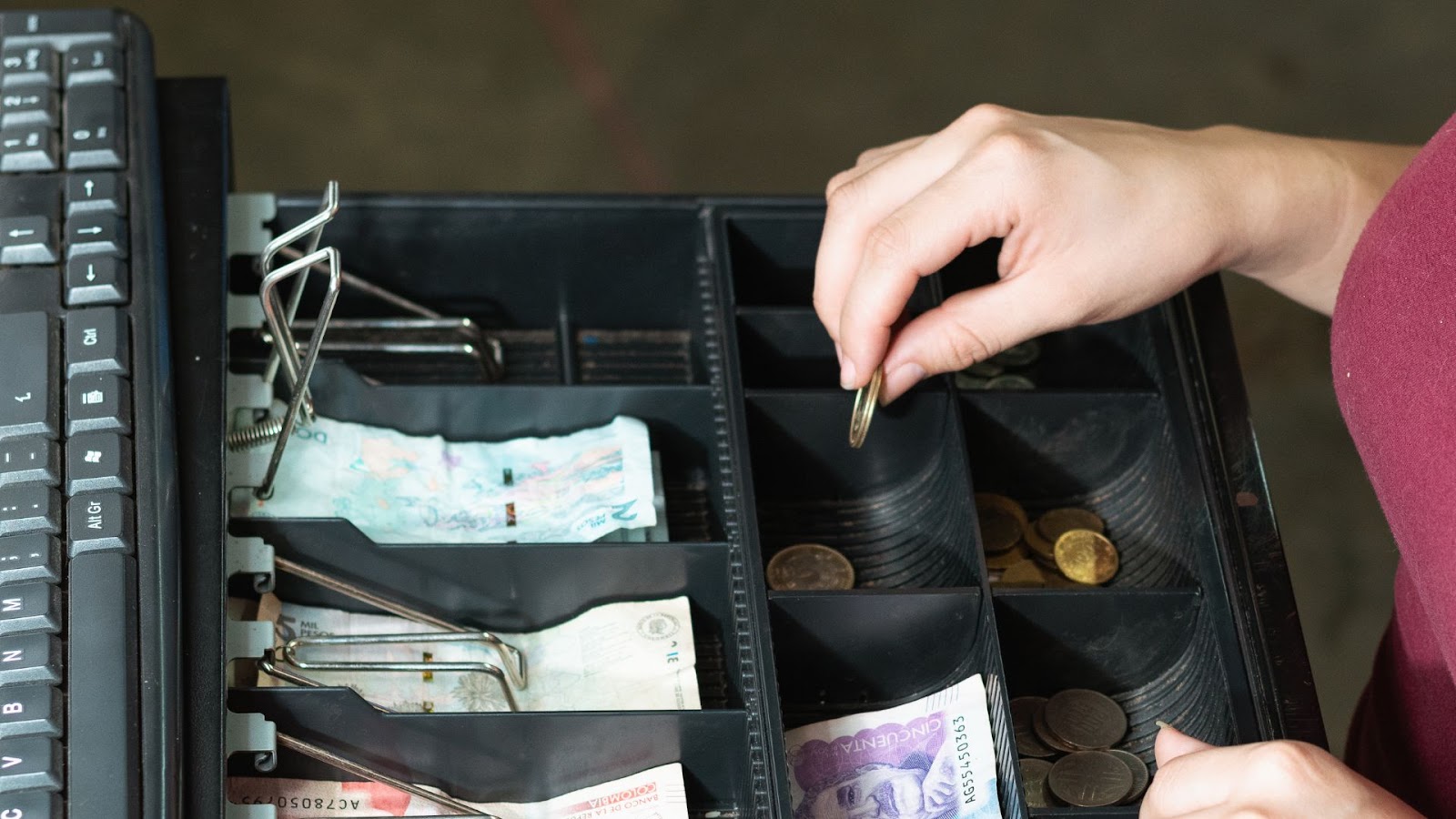July 30, 2025

Running at full capacity but still not seeing the profits you deserve? You’re not alone.
Even with packed tables and great reviews, you might still struggle to turn revenue into real returns. Rising ingredient prices, labor costs, and unpredictable overheads can quietly chip away at margins, making profitability feel just out of reach.
At the core of it all lies your prime cost (the combined total of your food, beverage, and labor expenses). Understanding and controlling this number isn’t just a financial exercise; it’s how you reclaim stability and set your restaurant up for sustainable success.
In fact, nearly 69.5% of diners say rising prices are affecting how often they eat out. That makes it even more vital for you to manage costs wisely, without cutting quality.
In this guide, you’ll learn how to calculate your prime cost, why it’s essential to your bottom line, and how to reduce it using smart tools and strategic menu planning.

Prime cost reflects the actual costs you incur to prepare and serve food in your restaurant. It combines your Cost of Goods Sold (COGS) with total labor expenses, which are two of the most important and manageable areas in your operation. Keeping them in control is key to protecting your margins and building sustainable growth. Unlike overheads, such as rent or utilities, prime costs are directly tied to your operations and can be directly influenced daily.
To calculate prime cost easily, you first need to understand its two main ingredients:
“Cost Of Good Sold” is the direct cost of all the food and beverages that leave your kitchen and bar. It’s not just what you bought. It’s what you used to create the dishes you sold.
How to calculate COGS:
Formula:
Beginning Inventory + Purchases − Ending Inventory = COGS
Example: If your opening inventory was $10,000, purchases $5,000, and ending inventory $8,000, your COGS is $7,000. ($10,000 + $5,000 - $8,000 = $7,000)
Note: For better insights, consider differentiating food and beverage costs. This helps account for varying tax rates and markup strategies. Tools like consistent inventory counts and waste tracking systems are vital. They show where losses might not be tied to sales, offering potential savings.
It includes every expense related to your staff directly involved in preparing and serving food.
What to include:
Pro Tip: Do not count owner/operator salaries unless paid as regular wages.
Formula:
Wages & Salaries + Payroll Taxes + Employee Benefits = Total Labor Costs
Example: If wages and salaries total $20,000, payroll taxes are $2,000, and benefits are $3,000, your total labor cost is $25,000 i.e., ($20,000 + $2,000 + $3,000 = $25,000)
Note: Analyzing labor involves considering different staff categories. Think of kitchen, front-of-house, bar, and management. It enables precise cost control. Be aware of regional regulations, as these significantly impact labor expenses.
Once you have your COGS and Total Labor Costs for the same period, calculating your prime cost is straightforward:
Formula:
COGS + Total Labor Costs = Prime Cost
Using our above examples: $7,000 (COGS) + $25,000 (Total Labor Costs) = $32,000 (Prime Cost).
Also Read: Proven Strategies for Cost Control in Restaurants
Tracking your prime cost in dollars is helpful, but calculating it as a percentage of total sales gives you a clearer view of your performance. This helps you set benchmarks and identify areas where your operations can be more efficient.
Formula:
Prime Cost/Total Sales x 100 = Prime Cost Percentage
Let’s say your total sales for the same period were $60,000.
$32,000/$60,000 x 100 = 53.33%
It means currently, 53.33% of your revenue is allocated to covering core operational costs, specifically ingredients and payroll. For quick-service models, maintaining a prime cost ratio between 55% and 60% is typically considered sustainable; full-service setups, on the other hand, may operate with slightly higher margins.
Here's a quick reference for interpreting your prime cost percentage:

The global restaurant digitalization market, which includes online ordering, is projected to grow at a CAGR of 16.7% from 2024 to 2033. This highlights the increasing importance of efficient digital tools.
Tracking prime cost weekly or monthly offers invaluable insights:
Now that you know why prime cost is crucial, the next step is understanding what a healthy benchmark looks like, so you can measure your restaurant’s performance with confidence. Let’s take a look at Canada to understand the benchmark.
Canadian Prime Cost Benchmarks:
Now that you know why prime cost plays such a crucial role in Canadian restaurants, let’s explore the tools and methods that can help you track it more easily and accurately.
Also Read: How to Create a Restaurant Budget and Control Costs?
With the right tools in place, you can simplify the process, improve accuracy, and make faster decisions for your restaurant’s profitability.
Begin by using Excel or Google Sheets to track food and labor costs. Use templates, share access with your team, and set alerts when costs cross set limits.
RMS connects with your POS to give real-time data on food, labor, and menu performance. It helps you spot issues and reduce waste.
Use POS and accounting tools with real-time reporting to cut manual errors and save time. API integrations enable you to track costs and receive alerts on the go.
Utilize a combination of tools for comprehensive visibility. Review regularly to avoid misclassifications, like counting kitchen prep hours under front-of-house labor.
Keeping prime cost in check is critical, but doing it manually saps time and leaves room for mistakes. That’s where smart tech like iOrders steps in.

Manually tracking and calculating key metrics can be time-consuming and resource-intensive. That’s where iOrders comes in, a digital solution built specifically for your restaurant. It simplifies online ordering, delivery, and marketing in one place.
iOrders connects with delivery partners like DoorDash Drive or Uber Direct, who charge a flat fee per trip without taking a cut from your sales. By cutting manual work and third-party fees, iOrders helps lower labor costs, improve efficiency, and boost profits, so you scale smarter, not harder. This operational efficiency directly impacts your prime cost, helping you save on labor and avoid waste.
At your restaurant, scaling isn’t just about more deliveries; it’s about smarter systems. iOrders equips you with a full suite of tools built specifically for restaurants, including:
With iOrders, you’re not just simplifying delivery, you’re improving efficiency, reducing prime costs, and building a more profitable, customer-focused brand.
Want to see how iOrders can help you streamline costs and grow smarter? Book a demo with us today.
Learning how to calculate prime cost isn’t just a numbers exercise; it’s a direct path to better margins and smarter decisions. By consistently tracking your food, beverage, and labor costs as a percentage of sales, you gain the visibility needed to spot inefficiencies, adjust pricing, and optimize staffing.
Whether you start with spreadsheets or adopt tools like iOrders, the key is consistency. Prime cost isn’t a one-time metric, but it’s a habit. And when you get it right, you don’t just save money, you build a healthier, more scalable restaurant business.
Ready to simplify your prime cost tracking and grow your bottom line? Book a demo with iOrders today and see the difference.
Prime cost is the sum of your restaurant's Cost of Goods Sold (COGS) and Total Labor Costs. It represents your most significant, most controllable expenses.
Tracking prime cost helps you understand your true operational efficiency. It directly impacts your profitability, identifies areas of waste or inefficiency, informs your menu pricing decisions, and supports smarter financial planning for your restaurant.
To calculate COGS, take your Beginning Inventory, add all your Purchases for the period, and then subtract your Ending Inventory. The formula is: Beginning Inventory + Purchases - Ending Inventory = COGS.
Total Labor Costs include all expenses related to your staff directly involved in preparing and serving food. This covers wages, salaries, payroll taxes (employer contributions), employee benefits, and workers' compensation premiums.
Generally, a prime cost percentage between 55% and 60% is considered healthy for quick-service restaurants. For full-service restaurants, the aim is usually around 65%. Best-in-class restaurants often achieve under 55%.
iOrders helps by reducing commission fees with its commission-free online ordering system, streamlining labor with centralized order management and POS integration, and boosting sales through effective marketing and loyalty programs. This all leads to better profit margins and improved prime cost percentages.
Yes, iOrders offers Delivery-as-a-Service. It integrates with third-party logistics partners like DoorDash Drive or Uber Direct, allowing you to provide seamless, branded delivery without hiring your own drivers. You pay a flat fee per delivery, avoiding commission cuts.